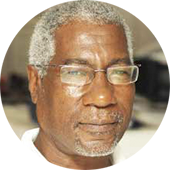
THE Martinique Connection
The Fer De Lance’s history isn’t rooted that far from Saint Lucia’s. Wikipedia notes: ‘The common French name Fer-de-lance (or Lance Head), originally referred to the Martinique Lance-Head (Bothrops lanceolatus), found on the island of the same name in the West Indies.’
But the Martinique connection isn’t only historic. It also has a more modern element also related to the Fer de lance, but none of which I heard (or probably missed) during the week of snake-biting talk that accompanied Joe Knows’ stay at Victoria Hospital.
According to a VOICE article dated 23 June 2018, Saint Lucia and Martinique have been in cooperation in treatment of snakebites for quite some time, but especially after the World Health Assembly (WHA) in 2017 declared snakebites as ‘a neglected tropical disease’ and mandated the World Health Organization (WHO) to work harder to find a cure.
Since then, Dr Dabor Rosiere, a resident Martinican toxicologist, has been working on developing a cocktail drug to match both the Saint Lucian and Martinican Fer de Lances, which are naturally related.
In 2017, Dr Rosiere spent six months in Costa Rica in joint research with resident Professor Jose Maria Guiterrez, who actually developed the anti-venom currently used in Saint Lucia.
But the Saint Lucia-Martinique snakebite cooperation actually goes back 17 years to 2002, when the first local victim was evacuated to Martinique for treatment, resulting in an article published in the American Journal of Tropical Medical Hygiene co-authored by Dr Rosiere and Saint Lucia’s Dr Martin Didier. The two also made presentations at an international snake bite convention in French Guiana in 2016, which also addressed the outstanding matter of developing a cocktail anti-venom for multiple snakebites – and another related symposium is/was also due in Martinique this year. The Martinican toxicologist also attended a snakebite envenoming conference in The Netherlands in 2018.
Following last year’s Netherlands envenoming conference, Dr Rosiere, who is also President of the Caribbean Doctors Association (CDA), in June 2018 signed an agreement here with the Ministry of Agriculture’s Forestry Department regarding future aspects of Fer de Lance management.
Secretary General of the CDA, Saint Lucian ex-diplomat Keats Compton, explained at the time that the agreement was aimed at encouraging Saint Lucians to change attitudes by becoming more accommodating of (and thus less hostile to or fearful of) the Fer de Lance, especially bearing in mind its/their medical value in the fight to develop anti-venoms.
Indeed, a Fer de Lance protection programme exists here, run by the Forestry Department with cooperation of the Saint Lucia National Trust (SLNT), the Durrell Wildlife Conservation Trust, Flora and Fauna International and assisted by the Global Environment Facility (GEF) Small Grants Programme.
The Joe Connection…
The discussions following the Joe Knows snakebite revealed much worthy of note, including that Victoria Hospital is the only place an anti-venom is available locally. But while one is available, traditional fears continue to outweigh positive considerations about medicinal values of snakes.
Much information is available online on the subject, but very little is actually known by most Saint Lucians about the extent to which people are sufficiently aware of why anyone would or should want to see and treat a snake in a friendly manner, far less as a source of medicine.
Many recommended that all hospitals should have the venom — or if not, it should be placed at hospitals, health and medical centres in snake-prone areas; and/or all medical personnel should be made aware of where it’s located. However, according to an obviously knowledgeable source: ‘It is recommended that the anti-venom should only be administered at hospitals with Intensive Care Units (ICUs), since certain persons are allergic to anti-venom. An acute allergic reaction to anti-venom requires immediate medical intervention to save the patient’s life and in such an instance the anti-venom is a greater threat to life than the snake’s venom.’
Much information was also shared online about what to do in case of a snake bite — including the Victoria Hospital Snakebite Hotline (456-8229 or 456-8274).
Some said they’d cancel plans to visit named ‘snake-infested’ areas, while others suggested the Forestry Department should start a campaign of catching the reptiles, facilitating their multiplication in captivity and extracting their venom for medical purposes. Another suggested, however: ‘We can’t be driven by fear into “controlling” an endemic species (because) it is well documented that our own habits, like poor waste management, invite rodents and these rodents invite snakes. We can potentially invite snakes into our back yard… And the ecosystem is delicately balanced: Remove the predator and the prey multiplies. For example hunting and chasing the mongoose…’
Unfair criticism…
There was also much unfair criticism: like of Joe Knows for not wearing protective clothing in an area he knows has snakes and not knowing that Tapion Hospital did not have the anti-venom; and of Tapion for not having it. But through it all, thanks to Joe, now Saint Lucians (including me) know much more about snakes and snakebites than before he stepped on the ‘Fer’.
Ever the evangelical Doer of Good, Joe’s promised to do all he knows and go all-out to raise funds to help the ever-faithful Victoria better deliver her nightingale duties, even if on crutches — here too leading to differences of opinion as to whether his intended philanthropic intervention would not be better targeted at facilitating better future treatment of snakebites.
But, all in all, we are all better off in what we know about snakes, snakebites and treatment — thanks to Joe, who now knows more than he ever did know about what most of us think we know about all-there-is-to-know from what those-who-know already know so well about what we should know, but just don’t know at all.
And that makes both Joe and what he knows stand tall!












